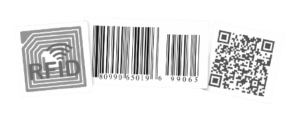Asset Tracking

Keeping track of assets has always been an important requirement for any business. There is always a need to know the physical location of any item so that it could be retrieved when required. For small businesses pen and paper record keeping or even simple spreadsheets can work. For example, you can use an equipment sign out form to know who’s currently using the tool, although this method may result in many errors due to the manual nature of data entry. As the times changed, the speed and accuracy of tracking items have become even more important. This has led to the development of cloud-based computerized assets management systems.
Keeping Track of Inventory Items
Keeping track of your equipment is the first step in managing your inventory, whether for a smaller number of items or a large set. Even if you have an idea of all the equipment you own, most of the time, you often need much more information about an item, which assets management can provide. It can also help to reduce the loss of items, as it is easy to know if anything goes missing.
Inventory Management vs Assets Management
Many businesses have a selection of physical assets they own that can move around and need to be tracked. There is a significant difference between inventory tracking and asset tracking. In inventory tracking normally deals with the items which once taken out of inventory never return into the system. This refers to items such as goods that are for sale. Once they are sold they are subtracted from the inventory never to be seen again. On the other hand assets management deals with items that go out of the store and then come back after some time. Just like a library where books are checkout and sometime later are returned to the library.
Anytime Assets centralizes all the information such as certifications, servicing data, quantities, locations, photographs, etc. It makes auditing very quick, transparent, and easy for you, as you can quickly generate compliance reports in a matter of minutes instead of days. You can also use your smartphone to access all this information anytime and anywhere as the system is cloud-based.
Since most clients are interested in goods but the containers or packaging have low priority, so these items are often lost. Good assets management system ensures these items are never lost as they have considerable value and investment and their loss is a significant loss of business cost to you. With an asset tracking system such as Anytime Assets, you can quickly check and locate who was the last person who held the item and if necessary, holds him responsible for its whereabouts.
Check-in-Check-out System
A check-in check-out is a system used for tracking assets such as rental or library items, tools, cars, office files or folders used by multiple people, etc. With this system, you can find out who owns the item at the moment and when does it need to be back. Check-in/check-out systems can easily provide asset usage reports such as which item is used most and which one is used the least to optimize your asset portfolio and to identify and locate any lost or stolen items.
How does it work?
The check-in check-out system uses a combination of scanning, data entry, and tracking. There are various ways you can tag and differentiate equipment from one another. Some of these methods use barcodes, QR codes, or RFID tags.
Barcodes
A barcode consists of printed bars and spaces. It is a machine-readable representation of numerals and characters. Barcodes are a low-cost option, especially if you have a small business, and you only need basic item identification. Barcodes smudge and become less readable over time, so they are useful only for a short term. The barcode’s unique identifiers also have some limitations.
Barcode scanning is a simple technology to confirm that the check-in check-out rules have been followed. To enable tracking, each item needs to carry a unique barcode label. Even if more items look exactly the same, each item has to have its own unique barcode. With barcode labeling in place, you can easily track check-in/check-out transactions. With barcodes and scanners, you can check out an item by simply scanning the barcode. When the item is returned, you follow an identical procedure to update the database.
QR Codes
QR codes are also printed codes that are readable by mobile devices. They look slightly different than the bar codes as they have square-shaped patterns instead of vertical stripes. These codes contain data that may also point to a website or a mobile app. QR codes have a unique pattern for each item, therefore the data is always unique to an individual asset. QR codes can be read by special scanners or even smartphones.
RFID Tags
Radio Frequency Identification (RFID) is the use of radio waves to read and capture information stored on a tag attached to an object. Advanced assets management systems use tags to identify an item and to record each check-in check-out transaction.
RFID tags are more durable but can be more expensive than barcode tag systems. RFID tags are battery-free and are read by short-range wireless scanners. They identify each asset by reading the unique data found on the tag. You can scan multiple RFID tags at once within the same storage compartment.
The RFID based systems increase the efficiency by automation and also provides safety and security of the items and prevent their loss due to fraud or outright stealing.
Using Smartphones
Just a few years ago specialized equipment like bar code readers and other types of scanners were required for assets management but everything changed very quickly with the advent of smartphones and cloud-based computing. Now instead of expensive specialized devices, smartphones can perform the same task cheaply and more effectively, dramatically improving the process.
Today’s smartphones with their high-resolution cameras have brought about a step-change in the assets management system. Now almost all your staff can get access and update the data to contribute to the tracking system.
While specialized scanners are still used in the industry, workers prefer to use smartphones because they are readily accessible to almost everyone. They are cheaper, lighter, and easier to deploy. They have greatly simplified internal processes while maximizing your asset utilization. An assets tracking system is much more efficient than manually tracking items by spreadsheet. And today’s smartphones make it easy for any organization to electronically keep tabs on its assets.
Conclusion
Asset tracking can help you to keep your assets in a way that is best suited for your requirements. The system provides accurate, real-time information to keep track of where your assets are, how they are performing, and what is their condition. You can use this data to make smarter financial decisions. Assets tracking solutions allow businesses to track their assets for greater control and visibility remotely.
We, at Anytime Assets, understand the challenge of managing not just physical assets, but also your personnel. That’s why we want to ease your worries by providing you with a system that will give you quick information on whatever assets you own, where they are, and who has them, all in real-time. Contact Anytime Assets for complete details.
